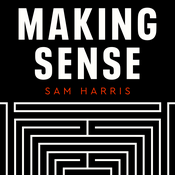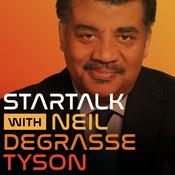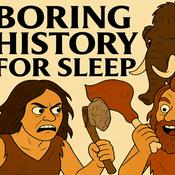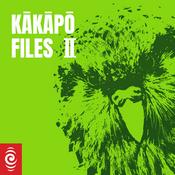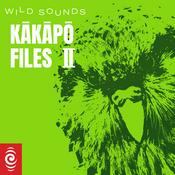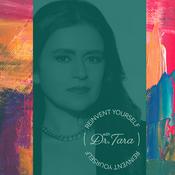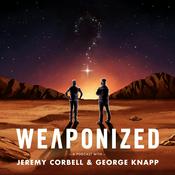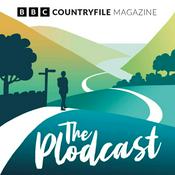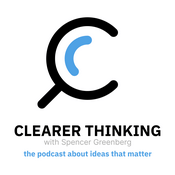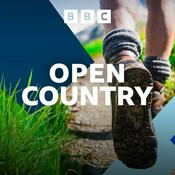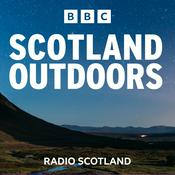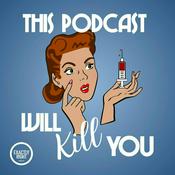328 episodes
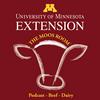
Episode 326 - A Holiday Reminder: Boundaries Are Self-Care - UMN Extension's The Moos Room
22/12/2025 | 8 mins.
In this short solo episode of The Moos Room, Emily takes the mic to talk about managing holiday stress through setting healthy boundaries. With the holidays approaching, Emily shares practical guidance on navigating family dynamics, uncomfortable conversations, and competing demands on time and energy.She outlines three simple steps for setting boundaries—being clear and direct, stating what you need, and accepting any discomfort that may follow—and walks through real-world examples such as saying no, redirecting conversations, asking for time, and stepping away when needed. Emily emphasizes that boundaries can be temporary or permanent, and that setting them is an important form of self-care.The episode closes with a reminder that boundaries help reduce unnecessary stress, support resilience, and contribute to healthier relationships. Emily encourages listeners to reflect on their own needs this holiday season and to remember that taking care of yourself is not selfish—it’s essential.Questions, comments, scathing rebuttals? -> [email protected] or call 612-624-3610 and leave us a message!Linkedin -> The Moos RoomTwitter -> @UMNmoosroom and @UMNFarmSafetyFacebook -> @UMNDairyYouTube -> UMN Beef and Dairy and UMN Farm Safety and HealthInstagram -> @UMNWCROCDairyExtension WebsiteAgriAmerica Podcast Directory

Episode 325 - Calf Transport: Why Early-Life Management Matters More Than Miles - UMN Extension's The Moos Room
15/12/2025 | 21 mins.
In this episode of The Moos Room, Brad dives into a landmark new study examining the effects of short- and long-distance transport on the health, survival, and growth of pre-weaned dairy and dairy–beef crossbred calves. Drawing on data from nearly 392,000 calves across multiple farms and transport durations (ranging from 30 minutes to 24 hours), the study challenges common assumptions about calf transport. Surprisingly, mortality upon arrival was extremely low and unaffected by transport length. Differences in mortality by weaning (60 days) were also modest and, importantly, were driven far more by early-life factors than by time spent on the truck.The discussion highlights colostrum management as the single most critical factor influencing calf outcomes. Calves fed two colostrum meals had higher serum protein levels, significantly lower rates of failure of passive transfer, and were about 50% less likely to develop diarrhea—one of the leading causes of pre-weaning mortality. Other key drivers of calf survival included diarrhea, pneumonia, dam parity, gestation length, and birth season, with transport duration explaining relatively little of the variation in outcomes. Brad emphasizes that a calf’s “destiny is largely sealed before the wheels start rolling,” underscoring that management decisions made at birth—especially colostrum feeding, dam health, and environmental stress mitigation—matter far more than transport distance alone.Questions, comments, scathing rebuttals? -> [email protected] or call 612-624-3610 and leave us a message!Linkedin -> The Moos RoomTwitter -> @UMNmoosroom and @UMNFarmSafetyFacebook -> @UMNDairyYouTube -> UMN Beef and Dairy and UMN Farm Safety and HealthInstagram -> @UMNWCROCDairyExtension WebsiteAgriAmerica Podcast Directory

Episode 324 - A New Vet in Town: Dr. Angie Joins the Moos Crew - UMN Extension's The Moos Room
08/12/2025 | 29 mins.
In this episode, Brad and Emily welcome a special guest: Dr. Angie Varnum, the University of Minnesota Extension’s new livestock veterinarian. After some banter about Minnesota winters—and a classic round of The Moos Room’s “super-secret” cattle breed questions—the crew dives into Angie’s unique path to Extension.Angie shares how she went from growing up in suburban Maple Grove to studying Spanish education, teaching in schools, and eventually being inspired to pursue veterinary medicine. Her training and work took her across the western U.S., where she gained experience in beef and dairy systems before returning to Minnesota to practice large-animal medicine. Her love for both animals and education ultimately led her to Extension.The conversation explores:How Angie’s Spanish language background shapes her work and the opportunities it creates for better outreach and training with Spanish-speaking livestock employees.Current and emerging livestock health concerns, and the importance of distinguishing real risks from media frenzy—while still preparing producers with good information.The evolving role of veterinarians in dairy and beef systems, from herd health and data-driven decision-making to the value of strong producer–vet relationships.Animal behavior and welfare science, an area Angie is especially passionate about integrating into herd health discussions.Angie also highlights upcoming Extension programs she’ll be involved in, including the new Artificial Insemination School, Beef Quality Assurance certification sessions, Cow/Calf Days, and several small ruminant programs—from webinars to hands-on lambing and kidding workshops.It's a fun, thoughtful conversation introducing a new member of the Extension livestock team and setting the stage for exciting work ahead.Questions, comments, scathing rebuttals? -> [email protected] or call 612-624-3610 and leave us a message!Linkedin -> The Moos RoomTwitter -> @UMNmoosroom and @UMNFarmSafetyFacebook -> @UMNDairyYouTube -> UMN Beef and Dairy and UMN Farm Safety and HealthInstagram -> @UMNWCROCDairyExtension WebsiteAgriAmerica Podcast Directory

Episode 323 - Why Aren’t The Cows Milking in Our Herd? A Deep Dive Into Dairy Nutrition Troubleshooting - UMN Extension's The Moos Room
01/12/2025 | 20 mins.
In this solo episode of The Moos Room, Brad dives into a deep, honest look at production challenges in the University of Minnesota dairy herd and the nutrition and management factors that may be holding cows back. After noticing low udder fill during classification and reviewing herd data, Brad confirms a troubling trend: cows across all lactations are producing 20–30% less milk than predicted. Early-lactation health issues—ketosis, metritis, and retained placentas—are also more common than they should be, especially in first-lactation animals.A recent visit from an outside nutrition team helped uncover several key issues contributing to poor performance. Brad walks listeners through what those “fresh eyes” found across young stock, calves, dry cows, and both the organic and conventional lactating herds. From overconditioned heifers to transition problems at weaning, ration inconsistencies, possible ingredient imbalances, and major concerns with hammer-mill screen size causing undigested corn to pass straight through cows—each discovery points to opportunities for improvement.The conversation also highlights the importance of forage management, including the need for a silage facer, better bunk management, and a long-overdue TMR audit to evaluate mixing order, load prep, refusals, shrink, and ration consistency.Throughout the episode, Brad emphasizes transparency and the value of bringing in additional perspectives. Even well-managed dairies can develop blind spots, and small issues add up fast when milk is left on the table. He outlines the farm’s next steps and promises future updates as changes are implemented.If you’re interested in nutrition, transition cow health, TMR audits, or practical herd-level troubleshooting, this episode is a real-world case study in identifying problems and planning for better performance.Questions, comments, scathing rebuttals? -> [email protected] or call 612-624-3610 and leave us a message!Linkedin -> The Moos RoomTwitter -> @UMNmoosroom and @UMNFarmSafetyFacebook -> @UMNDairyYouTube -> UMN Beef and Dairy and UMN Farm Safety and HealthInstagram -> @UMNWCROCDairyExtension WebsiteAgriAmerica Podcast Directory

Episode 322 - Understanding Farmer Stress: What to Watch For and How to Help - UMN Extension's The Moos Room
24/11/2025 | 23 mins.
Brad and Emily reunite on the podcast to dive into an essential—and timely—topic: farmer mental health. With fall wrapping up and winter on the horizon, stressors on the farm shift and often intensify. Emily shares updates on her recent travels and outreach work in farm safety, health, and wellness, highlighting the seasonal rise in mental health–related concerns across rural communities.Together, Brad and Emily walk through:Why stress is so high right now — uncertainty in markets, weather, disease, economic pressure, and social isolation.Common mental health concerns in farmers, including chronic stress, anxiety, and depression.Key warning signs to watch for in yourself and others—physical symptoms, behavioral changes, and emotional red flags.How to reach out when you're concerned about someone, and why it matters more than people realize.Barriers rural residents face when accessing mental health care, including service shortages and stigma.University of Minnesota Extension’s work supporting mental health, including training programs like COMET, resources on ambiguous loss, and broader regional efforts to make help more accessible.Emily emphasizes that checking in, offering support, and connecting people to resources can make a meaningful difference. The episode wraps with reminders that it’s okay to not be okay—but it’s not okay to keep it to yourself. Brad and Emily also point listeners to a long list of mental health and farm stress resources in the show notes, including Emily’s recent appearance on RFD-TV discussing this very topic.COMET: Changing our mental and emotional trajectory TrainingAmbiguous loss and farmingUMN Extension Farm Safety and Health webpageMinnesota Farm Stress resourcesFarm Aid Farmer Resource NetworkQuestions, comments, scathing rebuttals? -> [email protected] or call 612-624-3610 and leave us a message!Linkedin -> The Moos RoomTwitter -> @UMNmoosroom and @UMNFarmSafetyFacebook -> @UMNDairyYouTube -> UMN Beef and Dairy and UMN Farm Safety and HealthInstagram -> @UMNWCROCDairyExtension WebsiteAgriAmerica Podcast Directory
More Science podcasts
Trending Science podcasts
About The Moos Room™
Listen to The Moos Room™, Ologies with Alie Ward and many other podcasts from around the world with the radio.net app

Get the free radio.net app
- Stations and podcasts to bookmark
- Stream via Wi-Fi or Bluetooth
- Supports Carplay & Android Auto
- Many other app features
Get the free radio.net app
- Stations and podcasts to bookmark
- Stream via Wi-Fi or Bluetooth
- Supports Carplay & Android Auto
- Many other app features


The Moos Room™
download the app,
start listening.


